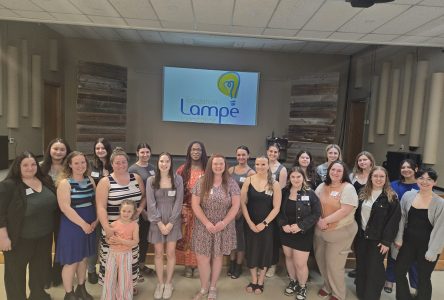When the British Home Children (BHC) arrived in Canada, they were placed in receiving homes across the country where they were accommodated until they could be placed with a Canadian farm family. Here, the children patiently waited to start their new life; a life that was described to them as incomparable to the one they were living in the United Kingdom.
In the second part of this series dedicated to the BHC, we explore the work of the receiving homes, with a particular focus on the Knowlton Distribution Home, and what happened to the BHC upon being placed with their new Canadian families.
After being prepared by various sending organizations in the United Kingdom, the BHC made the trip overseas where the receiving homes awaited them.
One major home in the Eastern Townships was the Knowlton Distribution Home; first operated by Annie Macpherson, a pioneer in the emigration of children to Canada, and then taken over by her sister Louisa Birt.
Knowlton Distribution Home
The Knowlton Distribution Home was established by Macpherson in 1872 with much support from the local community and was then taken over by Birt in 1877.
The home placed around 5,000 children during its 40 years before closing its doors in 1915.
It had set contracts with the families the children were placed with that outlined what was required of them, such as providing proper clothing in order to receive and keep the child.
It was also asked of the minister of each family to provide their support to ensure that they were suitable.
While there was much support for the work of the Knowlton Home, it came under criticism.
In 1875, the Andrew Doyle Report was published; Doyle was an inspector for the federal government looking into the emigration scheme.
In his report, Doyle inspected the work of Macpherson and he highlighted how the contracts that were set in place between the families and the home benefitted the families more than the child by providing them with cheap labor.
He also criticized Macpherson for wanting to rush the placement process, sending children off as soon as they arrived, and emphasized that a more thorough inspection needed to happen after the child was placed with their new family.
He mentioned that when some of the children were placed with their families, they were not sent out in the cleanest of conditions by the home.
He further criticized the physical conditions of the home itself, pointing out that there lacked proper bedding for the children, separation between boys and girls, and separation of children who were sick.
Those closely connected to the home, such as Mr. Justice Dunkin, representative for Brome County, were of course against much of what was said in the report and strongly believed in the value of Macpherson’s work.
In the book The Children’s Homefinder, Lilian Birt, daughter of Louisa Birt, described Knowlton as a very isolated village at the time of the emigration scheme which made winters tough.
If children were sick, there was no hospital and they had to be treated at the home.
The home also lacked basic amenities such as electricity, heating, and hot water. It would only be in 1885 that Miss. Meiklejohn, who became superintendent of the home after it was taken over by Birt, raised enough money to have a furnace, lights, and hot and cold water.
The children also struggled with feelings of disappointment and being unwanted when they were not chosen by a family.
The Knowlton Distribution Home closed its doors around 1915, as emigration ceased during the First World War. The building has since been transformed into apartments.
Gibbs Home
On the other side of the Townships, we had the Gibbs Home located on Lawford Street in Sherbrooke.
The Gibbs Home dates back to the Lawford family before they sold the property to the Church of England Waifs and Strays Society.
The Society established the property as a receiving home for girls starting in 1884 known as the Gibb’s Home for Girls.
In 1897, the Gibb’s Home became a receiving home for boys and served as such just until the end of the 1930s. Before that, the boys were sent to another home Sherbrooke known as the Benyon Home.
The Society was known to be one of the stricter organizations with a policy set in place before the children were even sent to Canada.
Before the children could be received at the Gibbs Home, it was required that the consent of either their parent or guardian be given. If consent was not given, they remained in care in England.
Like the other receiving homes, the Gibbs Home placed out children to work on farms and as domestic servants across the Townships.





